SMS marketing strategy done right: Key steps and real-world examples
Published on May 20, 2025/Last edited on May 22, 2025/12 min read
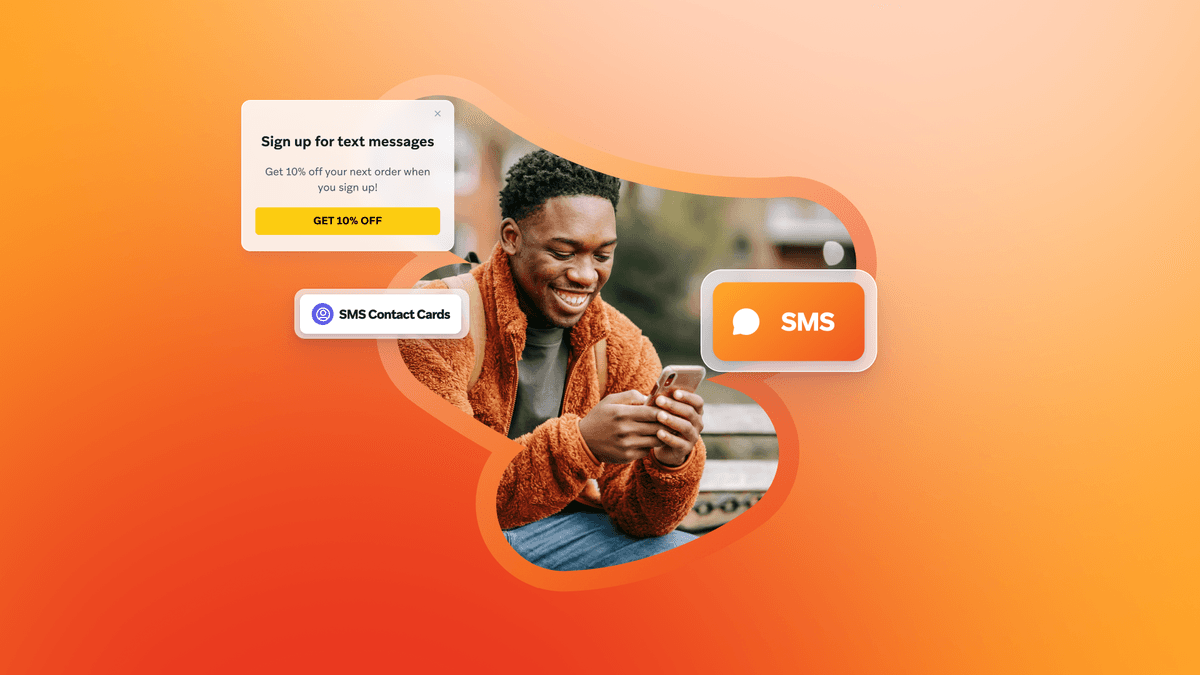

Team Braze
SMS marketing strategy has become a focus for brands aiming to drive retention, loyalty, and conversions on mobile. And it’s no wonder when you know that Americans send roughly 2 trillion SMS messages a year. With open rates often reported as 98%, SMS can be one of the most effective ways to connect with customers in the moment.
But strong engagement doesn’t happen by chance. This guide outlines how to build a strategy that evolves with your program—from setting clear goals to orchestrating across channels—so your messages stay timely, relevant, and high-impact.
Contents
- What is SMS marketing?
- Why having an SMS marketing strategy matters more than ever
- Follow the crawl walk run roadmap to build a mature SMS strategy
- SMS marketing automation strategies
- Four steps to creating an SMS marketing strategy
- SMS marketing tips to improve performance
- Learn from these brands using SMS marketing strategies that work
- Get strategic with SMS or risk getting left on read
- Final thoughts
- SMS marketing strategy FAQs
What is SMS marketing?
SMS marketing is is a form of mobile marketing where brands send messages directly to customers via text messages (SMS) on their mobile devices. It’s particularly effective for time-sensitive messages and high-intent audiences, and when integrated with other channels, it becomes a powerful part of a cross-channel strategy.
What are SMS short codes?
SMS short codes are five- or six-digit phone numbers used by brands to send and receive text messages at scale. These codes are easier to remember than full phone numbers and are approved by mobile carriers for high-volume messaging, including MMS (multimedia messaging service, i.e. texts that contain images, videos, or GIFs). This makes them a common choice for marketing campaigns and two-way messaging.
With Braze, brands can manage short codes and connect them to tailored messaging journeys, from promotions to reminders to interactive SMS experiences.
Why having an SMS marketing strategy matters more than ever
SMS is one of the most direct ways to connect with customers, but that proximity comes with higher expectations and sensitivity from customers. When brands send irrelevant or poorly timed texts, customers often don’t hesitate to unsubscribe.
That’s why strategy matters. Without one, SMS becomes a series of disconnected sends with no clear purpose or plan. This makes it easy to overspend, miss key moments, or damage the customer relationship.
A structured strategy gives SMS a role in the broader marketing mix. It defines who you’re talking to, what you’re saying, and why it matters.
Follow the crawl, walk, run roadmap to build a mature SMS strategy
Adding SMS to your customer engagement strategy doesn’t have to mean overhauling everything at once. The crawl, walk, run model helps teams adopt the channel in phases—starting small, gaining confidence, and scaling over time.
Crawl
Start with simple, high-impact use cases. Think transactional and operational messages like account verifications, password resets, or order confirmations. Each one has a specified call to action (CTA). These messages are expected, time-sensitive, and can help build early trust.
Walk
Once that early stage is running smoothly, begin layering in promotional campaigns. Target specific audience segments based on real-time behaviors or preferences. SMS at this stage supports moments like flash sales, app engagement, appointment reminders, or loyalty nudges—and should be orchestrated alongside other channels. The key here is relevance and timing.
Run
At the run stage, SMS becomes part of a full cross-channel engagement strategy. Use insights from customer behavior to trigger dynamic, personalized messages that work in sync with email, push, in-app messages, and more. A/B test creative and use Braze AI™ to help optimize for engagement, so you can refine performance with reporting. This level of orchestration turns SMS into a driver of long-term value, not just short-term impact.

SMS marketing automation strategies
Automation turns SMS from a reactive tool into a proactive part of your marketing engine. With the right setup, you can trigger messages based on real-time customer behavior, personalize content at scale, and run campaigns that adapt automatically—without manual work.
SMS marketing automation starts with your customers. Use first-party insights to create live audience segments based on preferences, purchase history, app activity or cross-channel engagement. From there, build journeys that trigger texts when a customer hits a key moment—like abandoning a cart, reaching a loyalty threshold, or signing up for a new service.
For more, check out our guide to automating onboarding journeys.
Four steps to creating an SMS marketing strategy
1. Start with purpose and define your SMS marketing goals early
Every effective SMS program starts with a clear goal. Your objectives help shape everything—from audience targeting to message timing and content.
Focus on outcomes that align with broader business priorities. SMS can be used to convert high-intent users, re-engage dormant ones, or add value throughout the customer lifecycle. With Braze, teams can connect SMS campaigns to real-time behaviors, preferences, and cross-channel activity—so messages land when they matter most.
When goals are clear from the beginning, the entire program runs with more focus and less friction.
2. Segment personalize and optimize the core elements of a smart SMS strategy
The most effective SMS campaigns speak to the right person at the right moment with the right message. That requires more than just a list—it takes real-time data, smart segmentation, and flexible tools that support continuous improvement.
That makes it easier to deliver content that reflects where a customer is in their journey, whether it's a promotion for first-time buyers or a reminder tied to loyalty rewards.Messages can be triggered by events, sent as part of a journey, or optimized in real time to increase performance without extra manual work.
3. Align your email and SMS marketing strategy to drive better results
Email and SMS don’t need to compete—they work better together. While email marketing is ideal for longer-form content or less time-sensitive messages, SMS is great for urgency and high-intent audiences. When brands coordinate these channels instead of siloing them, they see stronger engagement and a more consistent customer experience. For example, a promotional offer might be sent via email, with a same-day SMS follow-up to high-intent users who haven’t opened. Or a loyalty update might land in both inboxes, reinforcing the message across touchpoints.
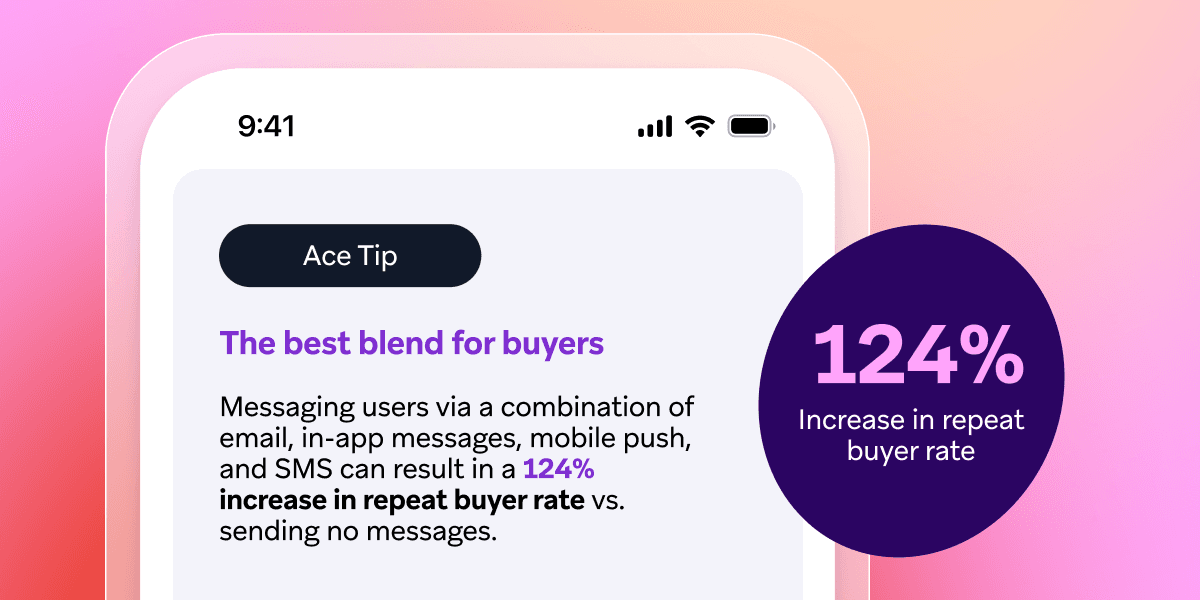
Braze research shows that orchestrating SMS with other channels like email, push, and in-app messaging can lead to a 124% increase in repeat buyer rate compared to sending no messages at all.
4. Track the right SMS marketing metrics to measure impact
If you’re not measuring performance, you’re guessing. A strategic SMS program tracks what matters—so teams can learn, adapt, and invest in what works.
Start with the essentials:
- Delivery rate helps confirm whether your messages are reaching subscribers.
- Click-through rate (CTR) shows how well your content drives action.
- Conversion rate ties SMS directly to business impact—purchases, signups, or other key outcomes.
- Opt-out rate reveals when your content or tone is missing the mark.
The right metrics can show you when things are working—and when they aren’t, so you can further adjust to optimize.
Reporting isn’t just about attribution—it’s about building a smarter, faster feedback loop. When teams know what’s working, they can scale with confidence and continuously improve the customer experience.
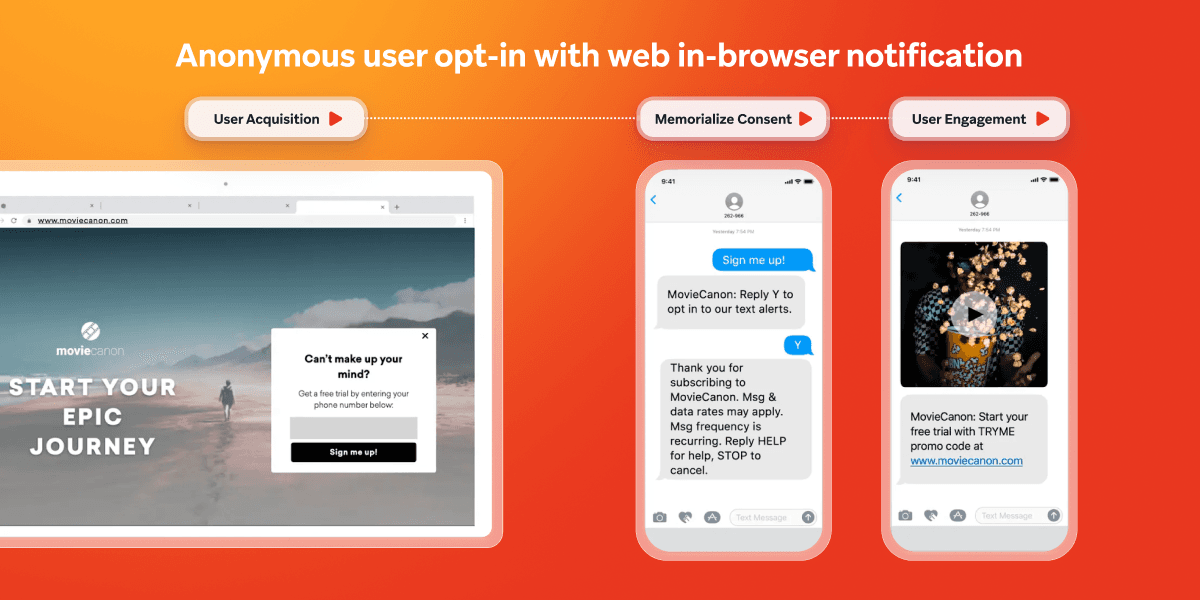
SMS marketing tips to improve performance
Even the most strategic SMS program benefits from regular refinement, because when someone subscribes to your SMS marketing, they expect a certain level of communication and quality. These quick tips can help your campaigns stay relevant and conversion-ready.
Lead with value
Every message should answer the question: “Why does this matter right now?” If it doesn’t, don’t send it.
Watch your tone
Text fatigue is real. Stick to a frequency that fits the content—urgent promos, timely reminders and personalized nudges—without overwhelming your audience.
Keep it clear
SMS often works best when it’s direct. Use plain language, a clear CTA, and short links. Avoid jargon or filler.
Segment smarter
Customers who browse daily don’t need the same message as someone you haven’t seen in months.
Test and optimize
Try different send times, message copy, or offers. Use A/B testing and AI tools to learn what works—then scale it.
Make it part of something bigger
The best SMS campaigns are integrated. Connect SMS with email, push, or in-app so every message supports a broader customer journey.
Learn from these brands using SMS marketing strategies that work
Looking for inspiration? These brands used SMS strategically—not just to send SMS messages, but to drive real results with different types of SMS marketing campaigns. From growing subscriber lists to increasing conversions, here’s how they made the most of the channel with Braze.
Dutch Bros brews up 230% ROI with personalized, cross-channel messaging
Dutch Bros is a drive-thru coffee company with over 800 locations across the U.S., renowned for its energetic culture and strong customer community. The brand aims to deliver personalized experiences that mirror the friendly interactions customers have with their "broistas" (baristas) in-store.
The challenge
As Dutch Bros expanded, their fragmented messaging systems led to inconsistent customer experiences and increased operational costs. The CRM team sought a unified platform to streamline communications, personalize customer interactions at scale and reduce the complexity of their tech stack.
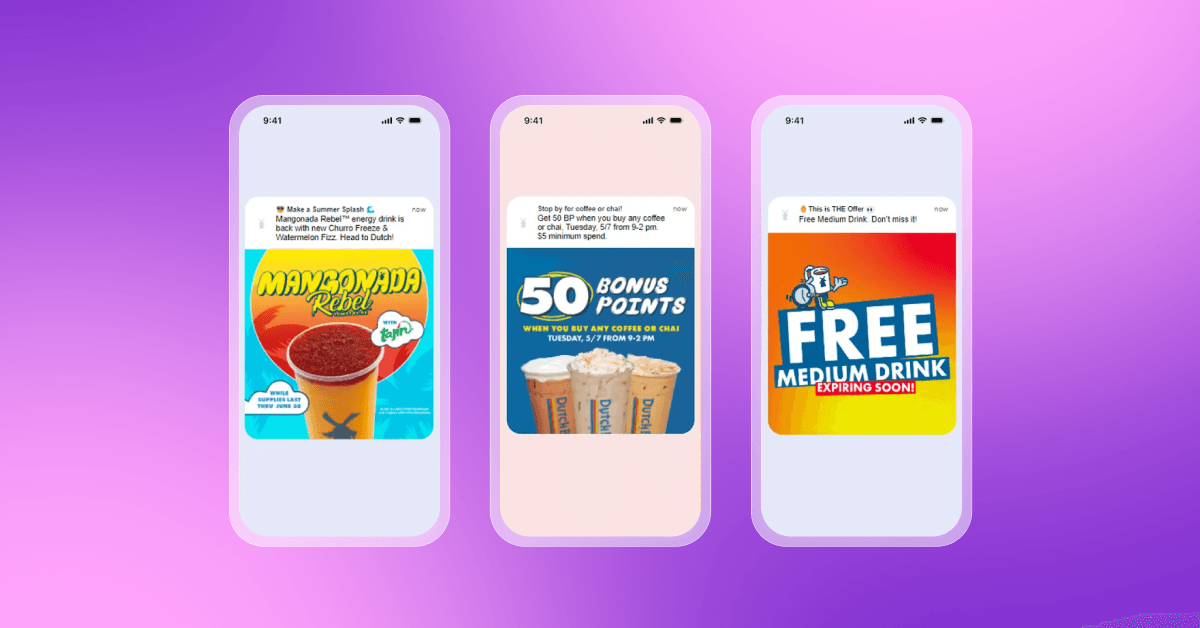
The solution
Partnering with Braze Technical Account Management (TAM) and Support Engagement Lead services, Dutch Bros implemented a cohesive cross-channel messaging strategy that included SMS, email marketing, push notifications, and in-app messaging. Utilizing Braze Canvas, our no-code journey orchestration tool and real-time data capabilities, they delivered personalized content tailored to individual customer behaviors and preferences.
The results
By consolidating their messaging platforms and enhancing personalization, Dutch Bros achieved a 230% increase in ROI from CRM campaigns and realized a 31% reduction in costs through platform consolidation. This strategic shift not only improved customer engagement but also streamlined operations and reduced overhead.
Sweetgreen serves up SMS for a 10% conversion boost
Sweetgreen is a fast-casual restaurant brand on a mission to build healthier communities by connecting people to real food. With a focus on digital innovation and a loyal mobile audience, Sweetgreen wanted to strengthen its customer engagement strategy while streamlining internal workflows.
The challenge
Sweetgreen’s marketing team wanted to encourage and remind customers to order through their app for delivery, rather than through a third-party delivery provider. They also needed a faster, more flexible way to launch personalized SMS campaigns. Their previous system required significant dev support, which slowed down execution and limited experimentation—especially when campaigns needed to go live quickly.
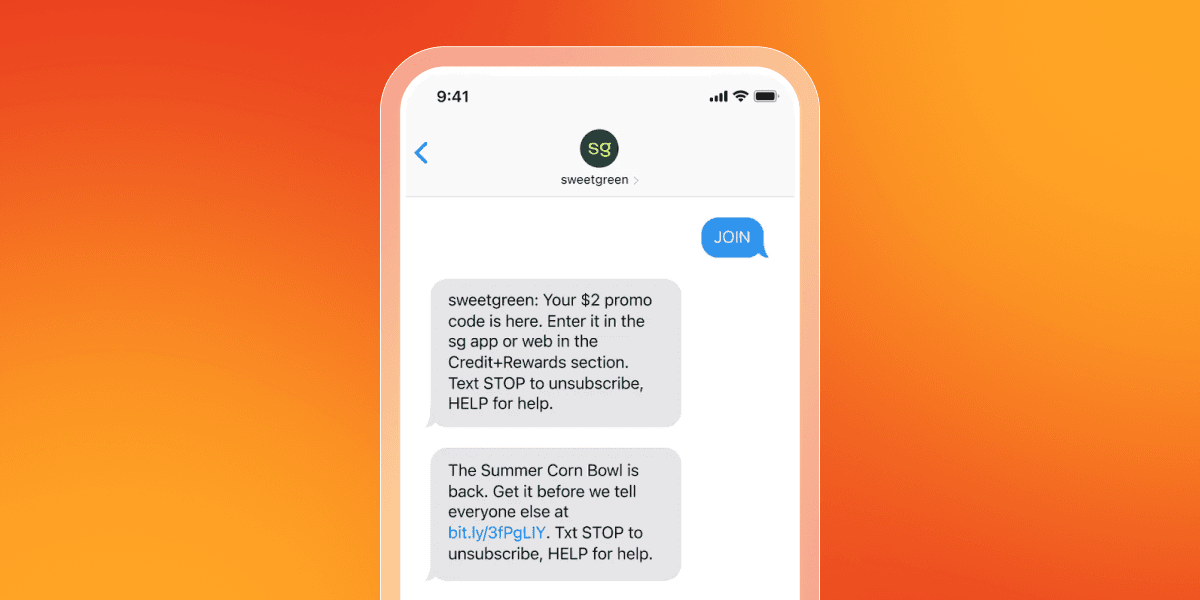
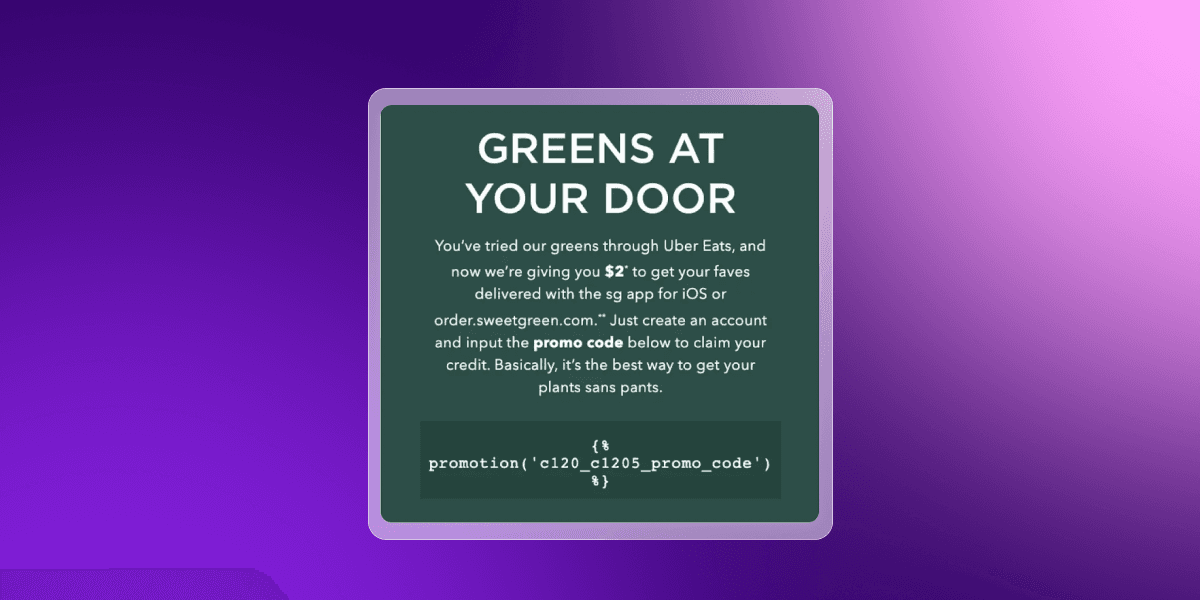
The solution
Sweetgreen adopted Braze and used the native Promotion Code feature to run promotional SMS campaigns that could be built and deployed directly to drive app orders—no dev time required.
The results
The SMS campaign drove a 10% conversion rate and added 10,000 new SMS subscribers. By reducing reliance on engineering, Sweetgreen’s marketing team gained agility and the ability to scale their mobile strategy faster.
KFC Australia triples purchases with SMS during holiday campaign
KFC Australia, a leading quick-service restaurant brand, sought to enhance customer engagement and drive incremental revenue through its mobile app, especially during the competitive holiday season.
The challenge
The team aimed to identify the most effective channel to boost purchases among app users, particularly those who hadn't enabled push notifications or had unsubscribed from email communications.
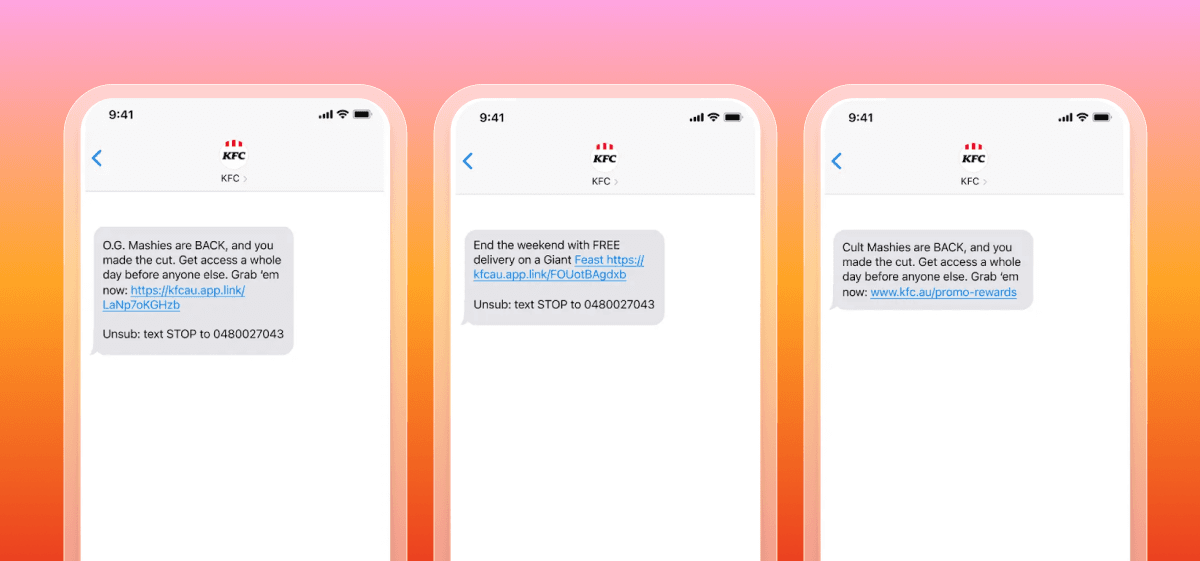
The solution
Collaborating with Braze and using Tech Alloy partners Snowflake and mParticle, KFC Australia conducted a two-month experiment between Boxing Day and Australia Day. They segmented their audience into three groups and sent highly personalized messages using Braze Canvas.
The results
The SMS campaign led to a 3X increase in purchases compared to push notifications. The SMS group experienced a 31% rise in incremental sales too and a 30% uplift compared to the control group.
Picklebet bets on personalization and wins big with 116% increase in sessions
Picklebet is an Australian sports and esports betting platform aiming to deliver a modern, engaging experience for the next generation of fans. Founded in 2019, the company focuses on providing a better entertainment experience across sports, esports, and racing.
The challenge
In a crowded market, Picklebet sought to differentiate itself by creating a more personalized customer experience. The goal was to maximize retention and customer lifetime value (LTV) without relying on expensive promotions.
The solution
Picklebet integrated Braze with its proprietary betting and promotional engine to deliver personalized offers to individual users based on their preferences. With Braze Canvas, the team orchestrated complex cross-channel journeys across in-app messages, SMS, email and push notifications. This setup allowed the marketing team to control which content certain customers saw on their app front end, providing VIP customers access to exclusive betting markets.
The results
After overhauling its cross-channel messaging campaigns, Picklebet achieved a 116% increase in sessions per user, a 13% increase in retention, and a 550% improvement in customer acquisition cost (CAC) payback periods.
Get strategic with SMS or risk getting left on read
SMS is visible and personal—but without a strategy, it’s just noise. Customers expect messages that feel relevant, not random. And often with a simple “STOP” reply, they can opt out.
Building a smart, structured SMS strategy protects your investment, your reputation and your relationship with your audience.
With Braze, brands get the tools to do it right: real-time segmentation, behavior-based triggers, AI-powered testing, and seamless orchestration across channels, for messaging that works harder, costs less, and delivers more.
Final thoughts
When teams take the time to define goals, understand their audience and build thoughtful journeys, SMS becomes a high-performing engine for loyalty, retention and revenue. Using a combination of both in-product (like in-app messages) and out-of-product channels (like SMS) can result in 6.5X more purchases per user than using just in-product messages.
Whether you're in the crawl, walk, or run phase, Braze gives you the flexibility to grow with confidence. Start small, move fast and keep every message connected to the moments that matter.
This collection of 50 inspirational use cases—inspired by real campaigns carried out by Braze customers—can be easily customized to fit your unique needs and address your unique challenges.
SMS marketing strategy FAQs
What is an SMS marketing strategy?
An SMS marketing strategy is a plan for how and why you’ll use text messaging to engage customers—so every send supports a clear business goal.
How does SMS marketing compare to email or push notifications?
SMS marketing messages sees higher open and response rates than email or push, making it a strong choice for timely, high-impact messages.
What industries benefit most from SMS marketing?
Industries like retail, QSR, eCommerce, and travel often benefit most from SMS marketing, but the channel can be effective for any industry, depending on your brand’s business goals.
What’s the best way to grow an SMS subscriber list?
The best way to grow an SMS list is to collect numbers during high-intent moments and clearly explain what subscribers will get.
When should SMS be used in the customer journey?
SMS should be used during key moments in the customer journey—like cart abandonment, loyalty updates, or time-sensitive alerts.
Be Absolutely Engaging.™
Sign up for regular updates from Braze.
Related Content
View the Blog
How AI Decisioning Transforms Marketing (A Complete Guide)

Team Braze

AI decisioning cheat sheet: How to crawl/walk/run with BrazeAI Decisioning Studioᵀᴹ

Team Braze

A day in the life of a data scientist on the BrazeAIᵀᴹ forward-deployed engineering team
